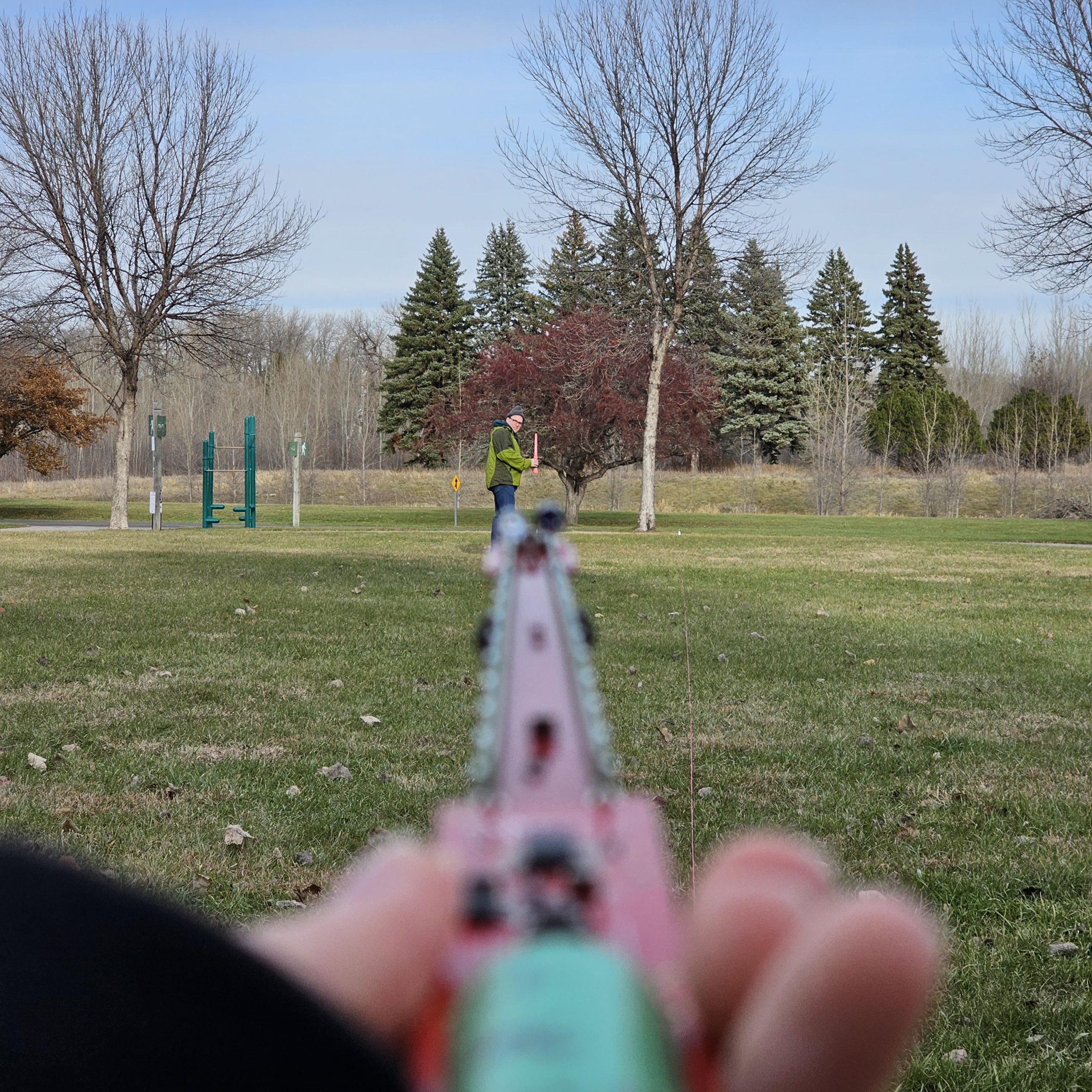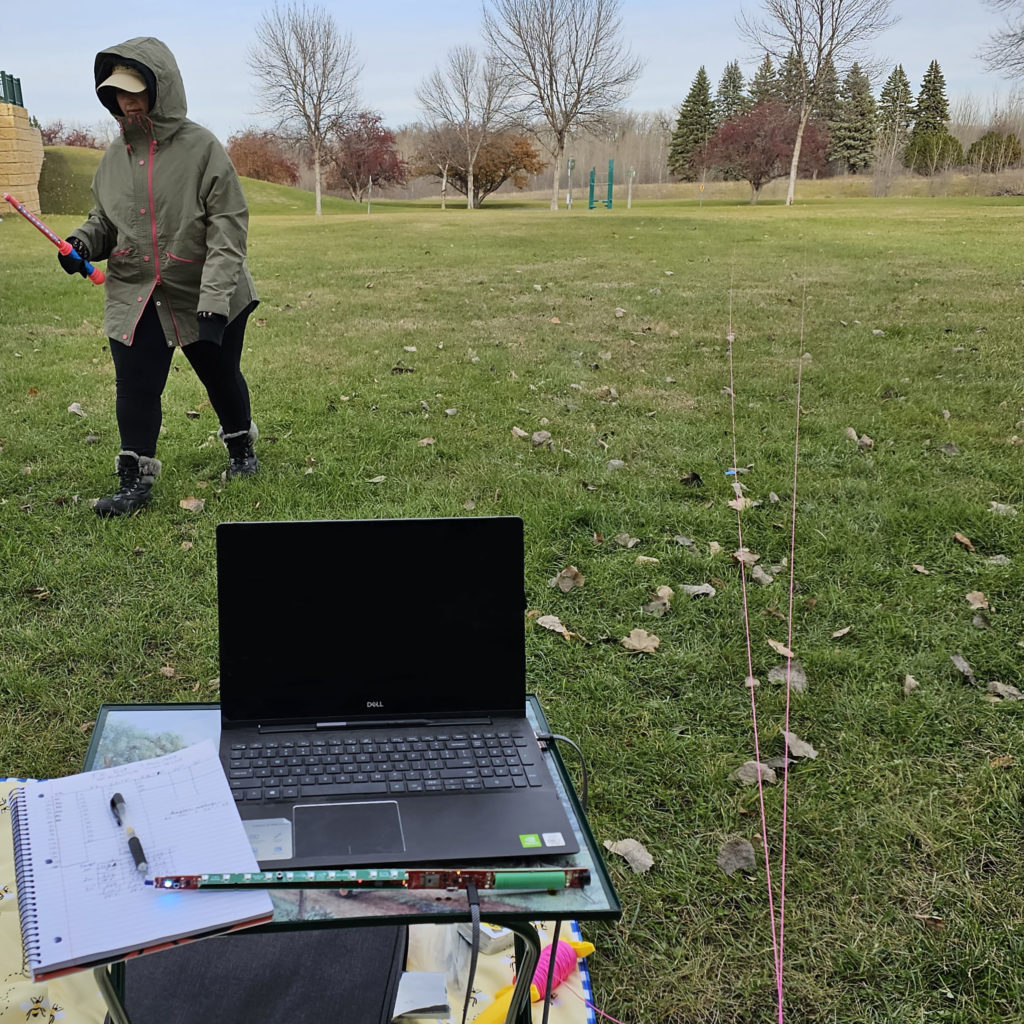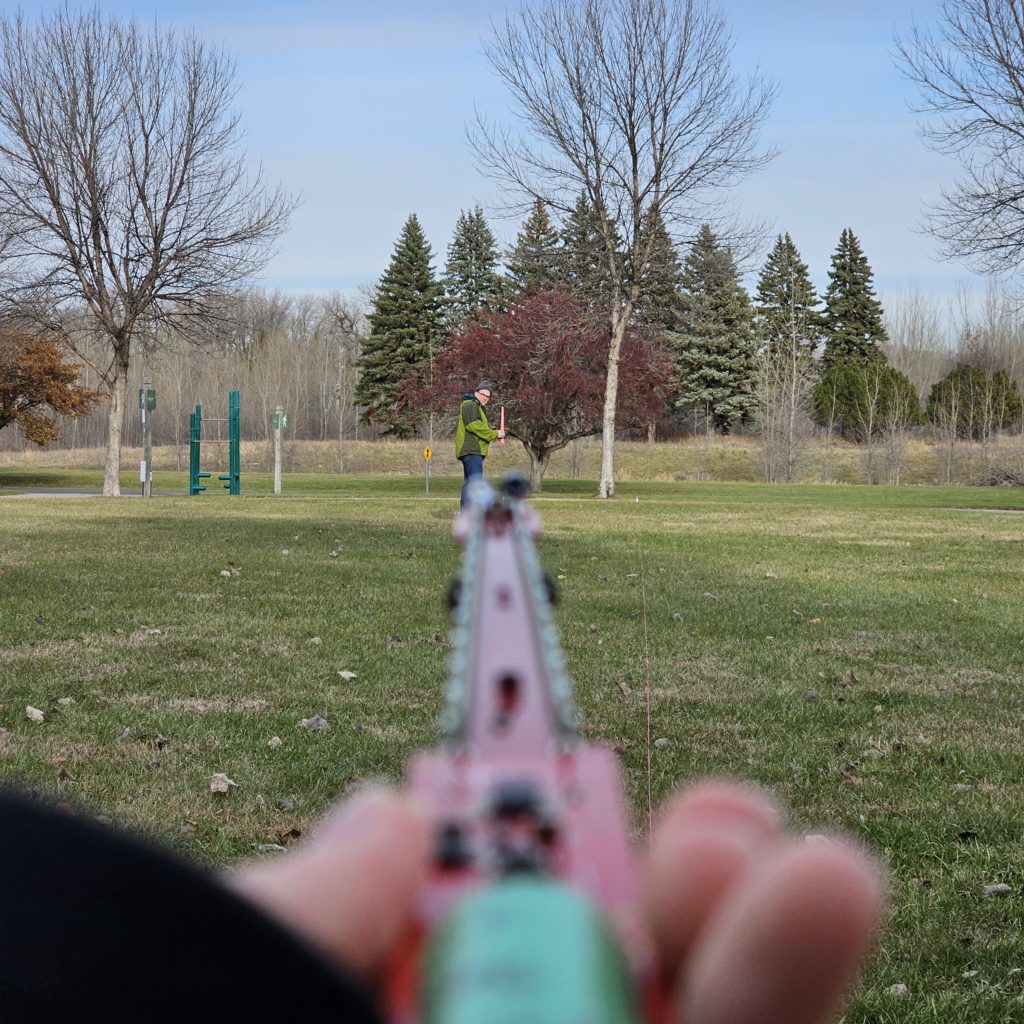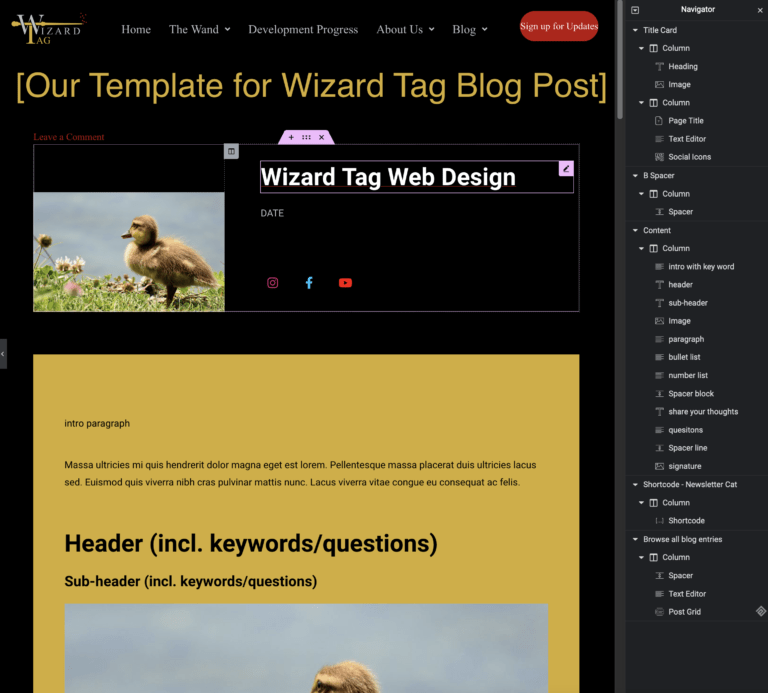Wizard Tag

In January of 2023, Wizard Tag conducted the first extensive infrared communications tests for the Wands. We were able to give feedback to the engineers so that they could optimize the power output for the required ranges on the spells.
In the summer, new circuit boards were produced with the hardware changes integrated.
After the software was written to test the new boards, Wizard Tag went out into the cold November air of North Dakota and put a couple of wands through a similar cycle of testing as in January.

November Infrared Testing
Why are we doing Infrared Testing?
Most laser tag systems use coded infrared signals for communication.
The Wizard Tag Wands also use infrared signals to tell the other wands what spells have been cast, any modifiers on the spell, who was the attacking Wizard, and so on.
We need to know that the signals are received and understood completely by the receiving wand. We also want to make sure that the ranges are correct. The Ice-spike should have a long, narrow beam, and the Fireball should have a short range, with a much larger blast area.
There are other things to look out for during testing, such as the ability to successfully communicate with infrared in sunny conditions. Sunlight has a lot of energy in the infrared spectrum, which should be discounted by the hi-tech sensors in the wand.
Finally, most laser tag systems only have one sensor on the guns, and maybe multiple sensors on wearable items, like a connected laser tag vest. Wizard Tag has everything you need to play built into the wand. In order to ensure reliability of reception, we use multiple sensors. The testing should show that integrating multiple sensors works and also whether or not there are more sensors than necessary.

What is different between this test and the tests that were done in January this year?
The main differences between this test and the January tests have to do with hardware.
The new circuit boards utilize different resistors in order to maximize radiant power. The orientation and number of sensors in January was also different. Finally, we have prototype cases that include translucent lenses covering the sensors, so it is possible to test how much signal attenuation can be ascribed to interference from the plastics.
What were the results of the test?
So far, the tests are helpful!
They showed that we have good range for both types of combat spells, and that all of the sensors are operating correctly. We tested off-angle shots, which validates the width of the beam and simulates the blast radius for the Fireball. We also had integrated special effects and LED animations that go with the attack spells, so we could verify that those were programmed as designed.
All in all, while the ranges could still be optimized, and the exact amount of attenuation from the lenses is unknown (since these were 3D Printed simulations), the tests were successful.
Share your thoughts in the comments below!
- Have you ever done any scientific testing? What did you do if the results were unexpected?
- Would you prefer to hear about the science of the wands or would you rather remain oblivious and keep it “magical”?
- Do you have any comments or suggestions about our wand tests?

Want more Wizard Tag updates?
Follow our Progress as we create Laser Tag for Wizards!
#makingmagicreal
Browse the Latest Blogs:

Game Review: The Vale of Eternity
- 6 min read
- Date: May 12, 2024

Game Night: Root
- 4 min read
- Date: May 5, 2024

Wizard Tag Web Design
- 4 min read
- Date: April 28, 2024